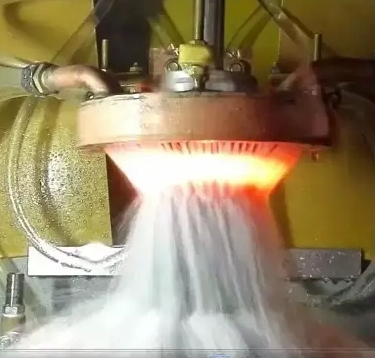- 23
- Jun
Common faults and troubleshooting methods of high frequency quenching equipment
Yleisiä vikoja ja vianetsintämenetelmiä korkeataajuiset sammutuslaitteet
1. Fault phenomenon The high-frequency quenching equipment works normally but the power does not go up.
If the equipment works normally, it can only mean that the power of each component of the equipment is intact, and it means that the improper adjustment of the parameters of the equipment will affect the power of the equipment.
Tärkeimmät syyt ovat:
(1) The rectifier part is not adjusted well, the rectifier tube is not fully turned on and the DC voltage does not reach the rated value, which affects the power output;
(2) If the intermediate frequency voltage value is adjusted too high or too low, it will affect the power output;
(3) Improper adjustment of the cut-off and cut-off value makes the power output low;
(4) The mismatch between the furnace body and the power supply seriously affects the power output;
(5) If the compensation capacitor is configured too much or too little, the power output with the best electrical efficiency and thermal efficiency cannot be obtained, that is, the best economic power output cannot be obtained;
(6) The distributed inductance of the intermediate frequency output circuit and the additional inductance of the resonant circuit are too large, which also affects the maximum power output.
2. Fault phenomenon The high-frequency quenching equipment is running normally, but when the power is raised and lowered in a certain power section, the equipment has abnormal sound and shakes, and the electrical instrument indicates swing.
This kind of fault generally occurs on the power given potentiometer, and a certain section of the power given potentiometer does not jump smoothly, causing the inverter to overturn and burn the thyristor when the equipment is unstable and serious.

